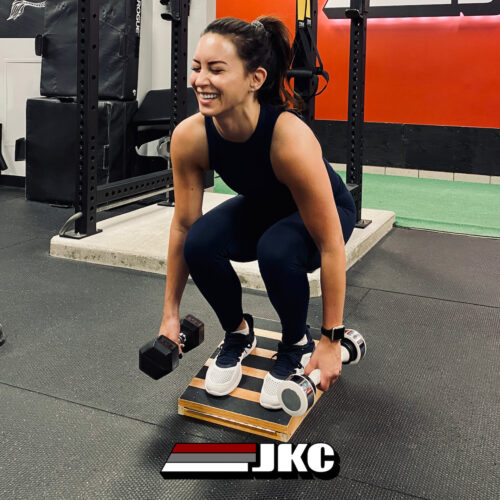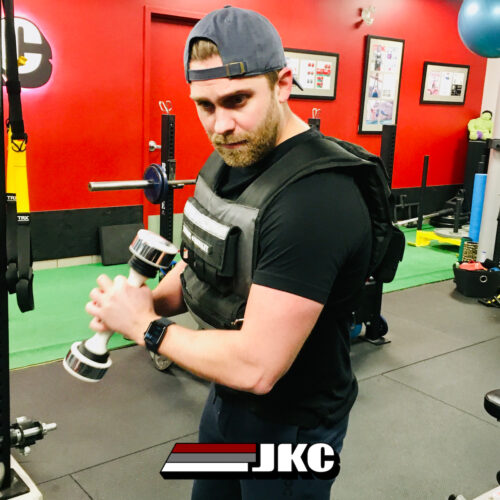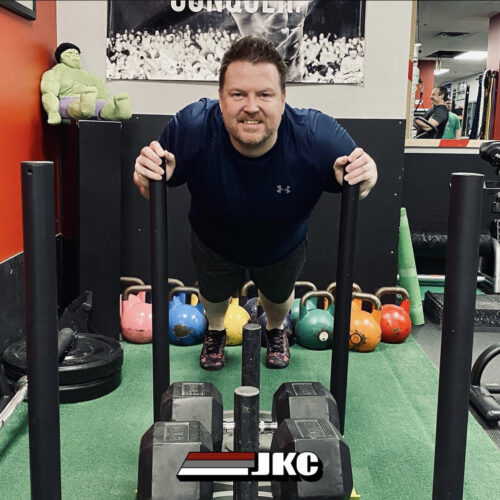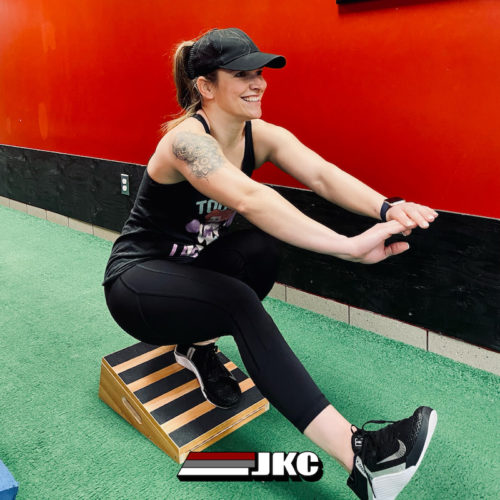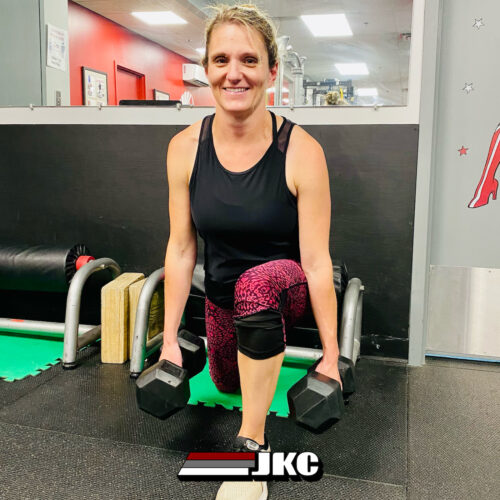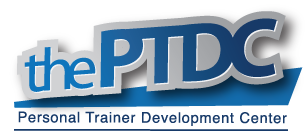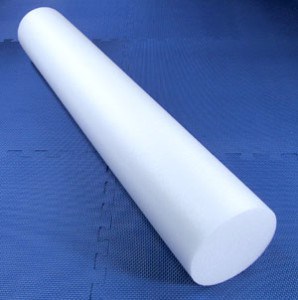 Over 6.5 years ago, I was told to read an article called Feel Better for 10 Bucks. It was written by two young strength coaches (at the time) that you might have heard of – some guy named Cressey and the other, Robertson.
Over 6.5 years ago, I was told to read an article called Feel Better for 10 Bucks. It was written by two young strength coaches (at the time) that you might have heard of – some guy named Cressey and the other, Robertson.
This article opened my eyes to something I had never heard of before, self myofascial release, or SMR for short. I remember seeing these pool noodle loookin-things at my physio’s clinic but never thought of rolling around on one. Similar to massage or trigger point therapy, SMR is a technique where you use your own body weight to sandwich your muscles in between your skeleton and what’s known as a foam roller. Some rollers are harder than others – some have ridges and bumps while some have flat surfaces. Other products on the market include hard spheres (lacrosse balls and baseballs work too), the Stick, the Thera-cane and arch rollers to name a few.
The application of self-massage stems from research involving massage therapy from a therapist. The actual body of research conducted on foam rolling devices and SMR is very limited. To date, there are 2 published papers, 1 published as undergrad research, 1 published abstract and 1 theses/dissertation. With all the strong recommendations from coaches and companies selling SMR tools, you would think there would be more academic support. These recommendations are based on anecdotal experience and personal opinions (which isn’t a bad thing).
SMR Theory
SMR is used to treat myofascial restrictions, improve muscle and soft tissue extensibility and to regain muscle strength (Curran et al., 2008; Davies & Davies, 2004; Fredericson & Wolf, 2005). It has been suggested that foam rolling is similar to receiving massage therapy (from a therapist) as it focuses on tissue that is tight or in spasm (Paolini, 2009). These areas of tightness are commonly referred to as trigger points or myofascial trigger points and are highly sensitive nodules found within tight bands of muscle, normally in the muscle belly (Paolini, 2009). Fascia that is more solid may cause or be caused by dysfunctional movement patterns, and may lead to tissue spasm (Sefton, 2004).
Pain will often occur when muscles containing trigger points are contracted. Trigger points are areas of increased energy consumption with a lowered oxygen supply because of inadequate local circulation (Chaitow, 2006). As a result, trigger points can increase muscular fatigue and reduce muscle-resting length because the muscle is held in a shortened position (Chaitow, 2006). Thus, trigger points may negatively affect athletic performance either by contributing to a higher sensation of fatigue or reducing optimal joint range of motion. In an attempt to break up these trigger points, athletes can utilize the technique of self myofascial release.
SMR Lit Review
After searching, I found 2 peer-reviewed articles, 1 article published as undergraduate research, 1 published abstract and 1 theses on the topic of foam rolling. [If there are more out there, please let me know.]
In 2006, Miller and Rockey published Foam Rollers Show No Increase in the Flexibility of the Hamstring Muscle Group. The purpose of this study was to determine if foam rollers are beneficial in gaining ROM in the hamstring muscle group. They had 23 subjects (males and females) which had to have tight hamstrings (measured by an active knee extension score of less than 80-degrees). The study was conducted over 8-weeks and the subjects were divided into a control group (n=10; stretching group) and a treatment group (n=13; SMR group).
Over the 8-week period, the control group performed 1-minute hamstring stretches, separated by 1-min breaks. This was performed 3-days/week in the athletic training room on campus. The treatment group rolled the back of their thighs for 1-minute, 3 times, also separated by 1-min. This was also performed 3-days/week for 8-weeks.

(Miller & Rockey, 2006)
Hamstring range of motion (ROM) was measured via an active knee extension measurement. This was achieved using an inclinometer and a Flexometer.

(Miller & Rockey, 2006)
Measurements were taken at the start of the study, at 4-weeks and at 8-weeks. Following statistical analysis, no significant different was found between the treatment and control groups. The researchers concluded “the results of this study revealed that foam rollers were an ineffective technique for increasing hamstring flexibility over an 8-week time period.” The researchers pointed out that gains in ROM were found in the treatment group; however, were insignificant when compared to the control group.
In 2008, Curran, Fiore and Crisco published A Comparison of the Pressure Exerted on Soft Tissue by 2 Myofascial Rollers. Ten subjects were recruited (male and females) for this study. The purpose of this study was to examine whether pressure and contact area exerted onto the lateral thigh differed between a multilevel rigid roller and a bio-foam roller during SMR of the lateral thigh and IT Band.

(Curran, et al., 2008)
Thin-film pressure sensels were used to record pressure and contact area during SMR. One foam roller type was used on one thigh and the other roller was used on the other thigh. The multilevel rigid roller, which was harder compared to the bio-foam roller, significantly exerted higher pressure and isolated contact area onto the lateral thigh compared to the bio-foam roller. The researchers conclude “that increased pressure might result in myofascial release and treatment of adhesions deep in the soft tissue.”

(Curran, et al., 2008)
In 2011, an abstract was published in the Journal of Strength and Conditioning Research from Healey, Dorfman, Riebe, Blanpied and Hatfield called The Effects of Foam Rolling on Myofascial Release and Performance. Twenty six subjects were recruited for this study (13 males, 13 females). Subjects participated in one of two groups: a planking group and a foam rolling group. Measurements included vertical jump on a force plate, vertical jump height (vertec), isometric force production (force plate), speed (47-yard sprint) and agility (pro-agility test). Fatigue, soreness and exertion were all measured via likert scales.
The researchers found that fatigue after foam rolling was significantly less than fatigue measures after planking and that 30-seconds of SMR on each of the lower limbs and back had no effect on subsequent performance. Further details and descriptions about the study are lacking because this is only an abstract. It would be interesting to see more details about the SMR protocol. I’m not sure why the researchers compared SMR to planking – commonly, dynamic exercises are performed in a warm up routine, not planking.
In 2011, Fama and Bueti published a Theses and Dissertation in the Sacred Heart University Digital Commons titled The Acute Effect of Self-Myofascial Release on Lower Extremity Plyometric Performance. The purpose of this study was to examine the acute effect of SMR warm up vs a dynamic warm up routine on strength, power and reactive power using a squat jump, countermovement jump and depth jump. Nine male subjects were recruited for this study and performed either the dynamic warm up or SMR warm up on separate days during a 7-day period. Here’s a breakdown of the 3 testing sessions:

(Fama & Bueti, 2011)
For each exercise performed in the dynamic warm up, 10 reps were performed with a walk back recovery. A high-density roller was used for the SMR protocol, which was performed bilaterally on the lower extremities for 1-min on each muscle group listed in the table above. The researchers found that the dynamic warm up produced a significant increase in countermovement jump height compared to the SMR warm up. The SMR treatment did not significantly affect performance in the squat jump or depth jump; however, appeared to negatively affect countermovement jump performance.

(Fama & Bueti, 2011)
The researchers state that there was a negative trend in jump performance as the neurological demands of the jump type increased and posit SMR resulted in autogenic inhibition, leading to golgi-tendon organ excitation and a subsequent decrease in muscle spindle activity. Since SMR produced a significant decrease in power compared to the dynamic warm up (re: countermovement jump), the researchers “do not advocate a foam rolling warm up immediately before activity for a power athlete.”
Lastly, in 2012, MacDonald, Penney, Mullaley, Cuconato, Drake, Behm and Button published An Acute Bout of Self Myofascial Release Increases Range of Motion Without a Subsequent Decrease in Muscle Activation or Force. The purpose of this study was to determine the effect of SMR on knee extensor force and activation and knee joint range of motion. Eleven males were recruited for this study. Knee extension maximum voluntary force, evoked force and activation and knee joint ROM were all measured prior to, 2-min and 10-min post two conditions: two 1-minute bouts of SMR on the front thigh (separated by 30-sec) or no SMR (control). Sessions were initiated with a general warm up consisting of 5-min of cycling on a Monark Cycle ergonometer (1 kp, 60 rpm).

Foam rolling technique for the quadriceps (Graham, et al., 2012)

Quadriceps ROM assessment method (Graham, et al., 2012)
A home made foam roller (neoprene foam surrounding a PVC pipe) was used for the SMR protocol. Following the SMR protocol, subjects’ ROM significantly (p < 0.001) increased: 10% and 8% at 2- and 10-min post SMR, respectively. No effect on neurological muscle performance was found.
Wrap Up
As you can see, the research is very limited and contradicting. The SMR protocols used have all been different (including technique and foam roller type used), exposing the muscle(s) to different amounts of foam rolling; therefore, hard conclusions are difficult to reach. The research gives us a good start and good insight into SMR and obviously more research needs to be conducted.
Should you stop foam rolling? Probably not. Should you foam roll before workouts? Maybe. How about after your workouts during a cool-down? Maybe. Or how about in a different session, completely separate from the workout? Maybe. Should you foam roll each muscle for 2-minutes each? How about 5-mintues each? It’s tough to answer these questions without further research. Do what you’ve been doing if it works for you.
If you’re new to SMR, here’s a common warm up routine pre-workout:
- 1) General Warm Up (typically cardiovascular exercise)
- 2) SMR muscle(s) of interest (maybe include trigger pointing)
- 3) Dynamic Warm Up exercises (general to sports-specific)
- 4) Exercise or Sports Specific Warm Up exercises (e.g. submax loads lifted in a weight lifting exercise (e.g. squat, deadlift, bench press, etc.) or strides (100m-200m if running)
For a healthy criticism of the last study, please refer to Greg Lehman’s commentary on Bret Contreras’ blog HERE.
References
Chaitow, L. (2006). Muscle energy techniques-Advanced soft tissue techniques. Toronto, Canada: Churchill Livingstone Elsevier. Print.
Curran, P.F., Fiore, R.D., & Crisco J.J. (2008). A comparison of the pressure exerted on soft tissue by 2 myofascial rollers. J of Sport Rehabilitation, 17:432-442.
Davies, C., and Davies, A. (2004). The trigger point therapy workbook 2nd ed.. Oakland, California, USA: New Harbinger Publications Inc. Print.
Fama, B.J., & Bueti, D.R. (2011). The acute effect of self-myofascial release on lower extremity plyometric performance. Theses and Dissertation, paper 2.
Fredericson, M., and Wolf, C. (2005). Iliotibial band syndrome in runners: Innovations in treatment. Sports Med., 35(5): 451-459.
Healey, K., Dorfman, L., Riebe, D., Blanpied, P., and Hatfield, D. (2011). The effects of foam rolling on myofascial release and performance. J of Strength Cond Res, supplement 1, 25: S30-S31.
MacDonald, G., Penney, M., Mullaley, M., Cuconato, A., Drake, C., Behm, D.G., & Button, D.C. (2012). An acute bout of self myofascial release increases range of motion without a subsequent decrease in neuromuscular performance. J of Strength Cond Res (published ahead of print).
Miller, J.K., & Rockey, A.M. (2006). Foam rollers show no increase in the flexibility of the hamstring muscle group. UW-L Journal of Undergraduate Research, IX:1-4.
Paolini, J. (2009). Review of myofascial release as an effective massage therapy technique. Athletic Therapy Today, 14(5): 30-34.
Sefton, J. (2004). Myofascial release for athletic trainers, part 1: Theory and session guidelines. Athletic Therapy Today, 9(1), 48-49.

